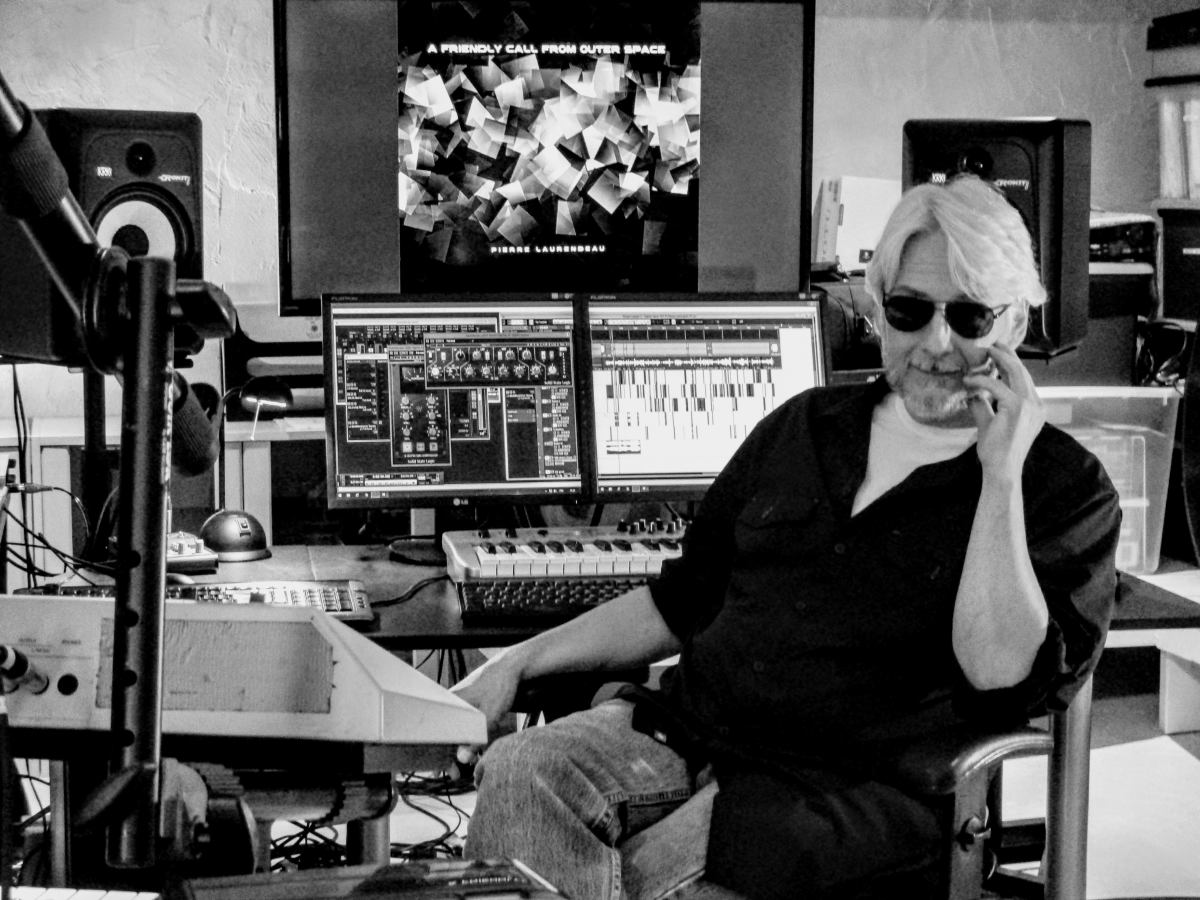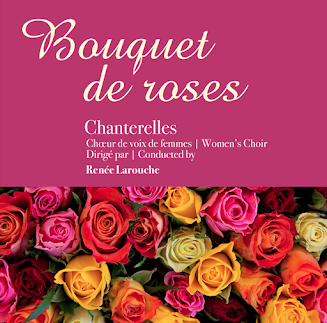An Interview With Canadian Electronic Musician and Composer Pierre Laurendeau
https://spinditty.com/genres/An-Interview-with-Canadian-Electronic-Musician-and-Composer-Pierre-Laurendeau
An Interview With Canadian Electronic Musician and Composer Pierre Laurendeau
Updated on July 31, 2018

Pierre Laurendeau is a Québec-based composer and electronic music artist. During his 30 year career, he has composed for television, radio and even circus performances. In 2017, he released his first personal project, an EP called WEM3 and has quickly followed it with his second EP entitled "A Friendly Call from Outer Space".
I interviewed him about his musical background, his creative process and where he finds inspiration.
Karl Magi: How did you first become interested in making music?
Pierre Laurendeau: When I was a child, I was already very sensitive to all of the music that I heard. The first singers I heard were the Beatles of my mother, the French singers of my father especially Charles Trenet and the Led Zeppelin records of my sisters. The stereophony of Led Zeppelin II was a revelation for me with full left and full right each time. As the youngest of the family, I knew all of the TV show themes by heart. It was by imitating the piano of the songs of Cat Stevens that I made my first steps as a musician. I discovered his songs by watching the movie Harold and Maude in the ‘70s. In that moment, I saw the incredible strength that binds music and image. I remember this moment where Harold pretends to cut a fake arm over the piano riff of the song “I Think I See The Light” of Cat Stevens. It was so striking to me!
At 17, it was love at first sight for baroque music. Johann Sebastian Bach became my idol. I threw myself headlong into harpsichord practice and achieved a degree in interpretation from the University of Montréal, but the acquisition of my first synthesizer (a Yamaha DX7) and the MIDI composition program called Voyetra on PC came to divert my early career as a harpsichordist. Here I am writing a lot of commercial music, song arrangements and music for documentaries. After an entire career in music, I am still amazed at the power of it. I always go back to music like a child in a sandbox. It’s a pleasure for me.
KM: What are the factors that make electronic music interesting for you?
PL: The mathematics of electronic music interest me the most. The beauty of a rhythm that is perfect in its precision always affects me, it is the mathematics of music at large which one can play to infinity. In electronic music, the music becomes a series of zeroes and ones with the addition of emotion and the multiplication of images. I imagine that J.S. Bach would have loved electronic music because it was he who loved mathematics so much.
I also love the discovery of new sound textures and ever renewed sources of inspiration. The amount of soundscapes that can be created is endless. I think that’s maybe why electronic music fits so well to the image. There is also the fact that electronic music does not know borders because it’s the result of an emerging global culture. Your musical roots can be rock, blues, jazz, pop and classical music. You can even bring in the traditional music of your home country.
In fact, I think it follows the same evolution as symphonic music in the 20th century with Stravinsky and Bartók’s new ways of approaching orchestral composition. Electronic music does not deny the past, it comes out of the past.
KM: How do you approach the process of composition?
PL: I approach composition in a largely intuitive way at the beginning. When we know the rules well in music, it becomes interesting to transgress them knowingly. In fact, I’m looking for more and more perfect rhythm. I want my music to live in the body as much as in the head, so that’s why I’m abandoning harmonic movement right now. They impose their own structure and I’m looking for something else now. I like the tribal side of percussion now because it’s something closer to your body.
For me, it’s always the creative gesture. As the saying goes, “It doesn’t matter how you start, just do it!” You have to be working when those ideas come. I have my critical mind at rest in every moment of the composing process. I postpone the decision to keep or not to keep something until I’m recording now.
Finally I’m also trying to limit myself to a certain number of colours in each project. If you mingle too many colours together, you end up making brown sometimes.
KM: Who are some of the musical artists who’ve inspired you and why?
PL: I was inspired in my adolescence when I discovered the music of Vangelis, Jean-Michel Jarre and the French composer Pierre Henry. I was also inspired by Wendy Carlos’ performance of the music of Beethoven for A Clockwork Orange. It made a great impact on me. I remember too an animated film produced by the National Film Board of Canada in the ‘60s where the music was engraved directly on the film creating most surprising electronic music.
I also really like Carl Craig’s music. I find it extremely skillful. I love Moby for the quality of his inspiration. In fact, I really listen to everything. Electronic music takes all sorts of directions that fascinate me. I try to identify trends to find new ideas for my personal research.
KM: What is the relationship between electronic music and the larger world of contemporary music?
PL: Electronic music is now everywhere. Since our smartphones and our computers are part of every sphere of our business, it is only natural that today’s music is increasingly produced electronically. It’s simply a reflection of the society in which we live. Its soundscapes are endless, so it is used more and more to support the image and the image will probably become the Trojan horse for electronic music sneaking up on our ears. It also allows the listener to come in contact with new emotions.
I think, for example, of the instrument that’s called the Ondes Martenot or the Martenot waves. It is one of the ancestors of electronic instruments like the Theremin. Those instruments were invented nearly 100 years ago. The first time I heard that mysterious sound coming out of the Ondes Martenot, I remember the emotion I felt was so different from anything I had ever experienced before. New sounds are a part of an inexorable march forward in the history of music and I’d like to be a part of it.
It is the sound of our cultural baggage that makes us unique. I want to hear the music that expresses how I feel and how I live in 2018.
KM: Talk to me about your EP entitled, “A Friendly Call From Outer Space”.
PL: Unlike my first EP called WEM3 which I had designed on my own, this time I had “a little help from my friends.” My good friend and author Normand Bergeron sometimes offers me titles for my compositions, so I sent him the first draft of the first piece of the EP and he suggested the title, “Waiting For A Friendly Call from Outer Space.” I loved the concept right away, but I still found it a little long for a title. We removed “waiting for” and it changed the meaning, so that it was my music that became the friendly call. It was also Normand who proposed to me the title, “Silence Within Turbulence” for one of the pieces on the EP. It seems to me that this title offers us, in fact, a complete scenario. What is this turbulence? Why this silence? Each of these questions has a different answer for different people.
I also had the collaboration of the composer and harpsichord maker Yves Beaupré. I worked with him a long time ago. He loaned me, for the recording period, his 1983 Fender/Rhodes Chroma Polaris analog synth. It is a rarity and I made great use of it for this EP. It was also Yves who created the cover art for the EP with his photographic works. He also gave me sound advice and constructive feedback throughout the composition process.
Finally the sound engineer Stéphane Grimm who helped me with the final mix. Stéphane and I have been sharing a studio for over 10 years now. Everything is a little clearer after his passage through my music, so he was a great help for this.
KM: What are some of your goals as a composer/creator of music?
PL: I feel like I’ve finally achieved great freedom in my compositions. To get there, I had to learn to play the piano and the harpsichord, I had to study the history of music from the Renaissance until today and computers and different recording techniques, I had to learn how to mix and program synthesizers. After tens of thousands of hours in the studio, music still excites my neurons and tickles my ears. Composing for me remains the most beautiful of trades, but beyond pure music, the world of composition to the image is the holy grail for me. T.V shows, documentaries, or circus events are all my pretext to follow the action.
Recently I composed the music for more than 70 episodes of the series Subito Texto here in Québec produced by Zone 3. It was just pure pleasure for three years. The possibility for independent artists to have access to the same distribution channels as the biggest artists inspires me to the highest point. I already have two EPs available on the Web and I’m preparing a third one for the end of the year which will be called Brainstorm. I already like this EP format for four to six songs because it’s lighter to design than a full album.
KM: How do you recharge your creative batteries?
PL: Like a kid, a new musical toy can always get me started on new adventures. I’ve been living in the countryside for over 20 years now and the proximity to nature suits me perfectly. To better hear my inner music, I need my dose of silence. It’s a necessary incubation period for future works. The brain needs to relax in order for a “Eureka!” moment to arise and thanks to the Internet, I can live in my monastery and still remain in contact with all of humanity. I can now access infinite sources of new creation every day. All of this humanity in full creative boiling pushes me to create and to throw my humble grain of salt into this ocean of new music.


Commentaires
Publier un commentaire